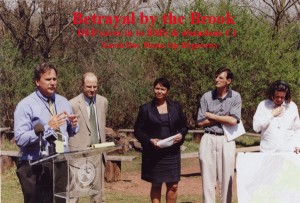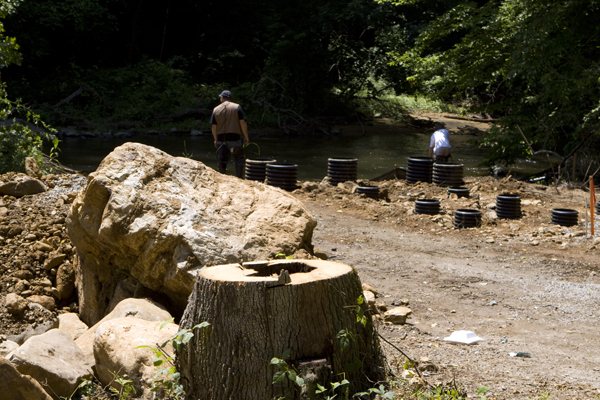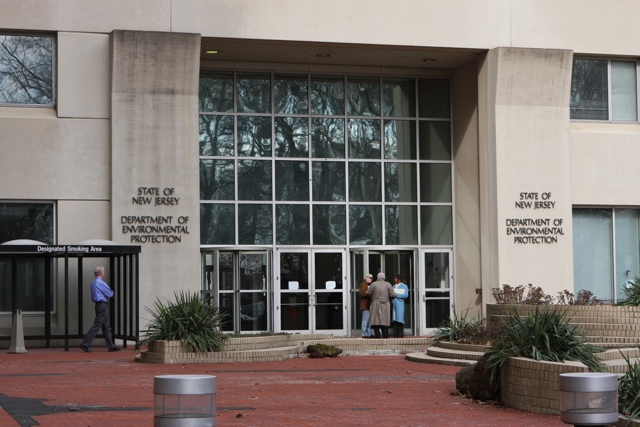Sierra Club Endorsement of Daggett – how did it happen and what does it mean?

NJ Governor Jon Corzine
The Sierra Club’s endorsement of Independent Chris Daggett for Governor has caused a stir in political circles.
As with almost all hyped news, the corporate media coverage and political blogosphere are narrowly focused on the short term electoral implications, and are completely ignoring the policy debate, or asking how we got to this juncture and what it means for policy going forward.
I’d like to take a step back and try to foster a discussion about what this means for policy, and promote a shared understanding of the history of how we got to a point where Sierra does not renew its endorsement of a Democratic incumbent Governor in favor of a third party candidate.
How did it come about that a self-described and widely considered liberal, pro-environment, global warming fighting, green power champion incumbent is abandoned by Sierra?
How did Sierra come about endorsing a man who chaired the pro-development anti-environmental DEP “Permit Efficiency Review Task-Force”?
The answer is found in an old fashioned story of co-optation and inside baseball. This dynamic necessarily leads to ignoring organizing and an impaired ability to develop any kind of public movement to provide political support for policy goals.

Then DEP Commissioner Lisa Jackson whispers in Governor Jon Corzine’s ear
Ironically, Sierra Club’s early cheerleading for Corzine and their too close relationship with DEP Commissioner Lisa Jackson basically created a very unhealthy dynamic. They got a lot of press blowing Corzine so full of hot air that he looked like a giant on the environment. Now,like Wall Street brokers cleaning up the mess they made, they are getting a lot of press slaying him.
From the beginning of the Administration, Sierra greatly inflated and unconditionally supported Corzine’s accomplishments (e.g. the warm embrace of Lisa Jackson’s “Category One” stream protections, and Meadowlands signing statement of the Global Warming Response Act).
Because Sierra had so highly praised Jackson for those stream rules (before they read the fine print) and Corzine for passage of the GWRA, it made it very hard to tell the truth about flaws and to focus on DEP’s total failure to implement the Act. It also created all sorts of political momentum for polluters and special interests to secure additional rollbacks of stream protections and hijack the Regional Greenhouse Gas Initiative (RGGI) cap and trade program bill. (for a critique of the GWRA, see: Star-Ledger Op-Ed: “No Teeth in ‘Tough’ Pollution Law”)
Sierra also either outright supported or looked the other way as Corzine continued to slash DEP budgets. Corzine watered down, ignored, or even rolled back every one of the policy commitments of his Gubernatorial electoral environmental platform (mandatory chemical plant safety, et al). Yet, there was no criticism for any of these compromises and sellouts – which sent a huge signal that Corzine would get a pass for promoting economic development over environmental and public health concerns.
At the same time, Sierra repeatedly pulled punches by withholding public criticism of the policies of their “friend”, DEP Commissioner Lisa Jackson. This dynamic included playing co-opting inside games in Jackson’s hand picked “stakeholder processes”.

Sierra Club applauds Lisa Jackson water quality proposal – before reading the fine print. They later criticized the rule but not Jackson.
For example, Jackson created the “Site Remediation Taskforce” that provided political cover to further dismantle and privatize the DEP toxic site cleanup program. When enviro’s agreed to participate “in the room”, their successful high profile media campaign to expose flaws in the DEP program fell flat and ran out of the media and political energy required to lobby for real change.
Similarly, Jackson issued an Administrative Order that established the “Permit Efficiency Review Taskforce” in response to political pressure by the NJ Builders Association and business community. The business community manufactured another bogus attack on DEP’s alleged role in the housing market and economic collapse. Jackson caved to that gross lie. Yet, instead of criticism of this Taskforce’s anti-environmental agenda, Jackson was given a pass. And now we are seeing the political consequences of that mistake, because now Chris Daggett will get a pass for Chairing that effort. How many people know that DEP Commissioner Jackson abolished the Division of Science and research, based on this Task Force Report.
Jackson negotiated and publicly sold the controversial “Permit Extension Act” on behalf of Corzine, thereby providing green cover
Yet we have heard very little from Sierra and enviro’s about all that. Had Christie Whitman done anything remotely similar to that kind of attack on DEP and science, Sierra would be holding multiple press conferences on the State House steps.

Sierra Club applauds Corzine at Meadowlands signing ceremony for Global Warming Response Act – they later called Corzine “full of hot air” for not implementing it.
On the Legislative front, Sierra never pushed either for legislative oversight or to strengthen environmental laws. They basically gave a pass to friendly democrats who chaired the environmental committees, Assemblyman John McKeon and Senator Bob Smith. Neither Legislators nor Sierra had any appetite in holding fellow Democrats Corzine or Lisa Jackson of DEP accountable. Just look at how the Inspector General Cooper’s Encap Report was handled – softball questions and a pass by enviro’s.
Sierra’s multiple accountability failures misled the public, provided green cover, and thereby enabled some really bad stuff at DEP on the regulatory front and in the Legislature (privatized LSP, Permit Extension Act, RGGI, et al)
Of course, things got so bad that even Sierra was forced to criticize Corzine to maintain their credibility.
We would not have gone down this road if Sierra and other enviro’s told the truth and held Corzine accountable to his campaign promises (which he failed uniformly to deliver on) from the outset.
The political lessons to be learned here? – play it straight with the press and use media strategically. Don’t get co-opted by the inside game. The Democrats are not necessarily your friends. Organize

Lisa Jackson with fellow Cabinet member Joe Doria. Doria resigned after FBI search warrants were issued for his office and home in operation “Bid Rig” investigation. Doria was denounced by Sierra, but never Jackson.





